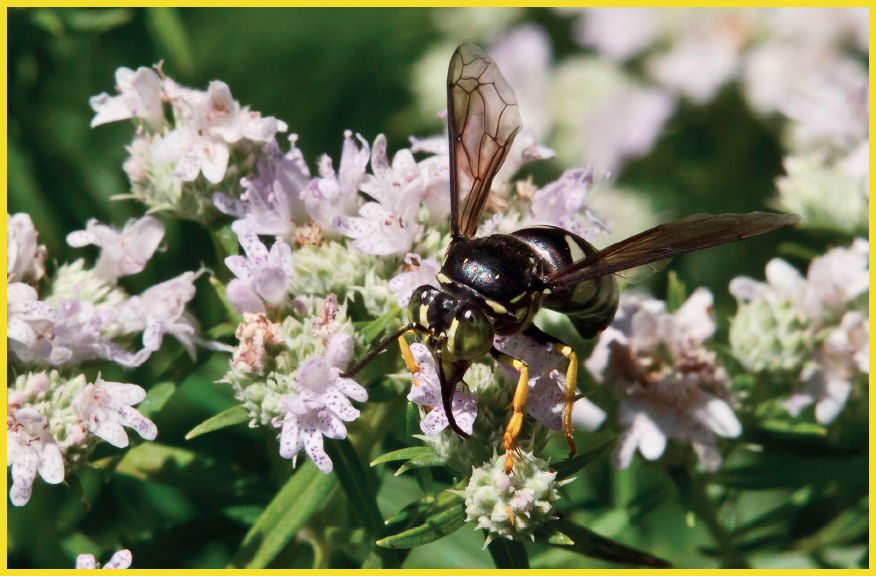10 Oblong Woolcarder Bee
Anthidium oblongatum
Characteristics
Length: 0.47–0.71 in (12–18 mm).
Flight season: May–October.
Nectar sources: Various, including bird’s-foot trefoil.
Habitat: Woodland, grassland, scrub.

This robustly built solitary bee is native to Eurasia, but was accidentally introduced to the United States in the 1990s and has since spread across several eastern states, including New York, New Jersey, and Pennsylvania. It looks more like a wasp than a bee. The head and thorax are mainly black, with yellow spots and bars, and the broad, flattened abdomen has bold, broken yellow stripes running across it. The legs are reddish-orange.
Females use their comblike mandibles to comb, or “card,” fibers from the leaves and stems of hairy plants such as lamb’s-ear, mullein, and yarrow. They use this material to build the walls of brood cells inside their nest burrow, which is usually in a pre-existing cavity in a wall, wood, or the ground; it may be the abandoned burrow of another insect. Females pick up pollen with the specialist hairs on the undersides of their abdomens and feed this and nectar from flowers such as bird’s-foot trefoil and vetches to their brood. Unusually for a bee, the males are larger than the females. They are fiercely territorial and have three spines at the tips of their abdomens, which they use as weapons to defend their territory.